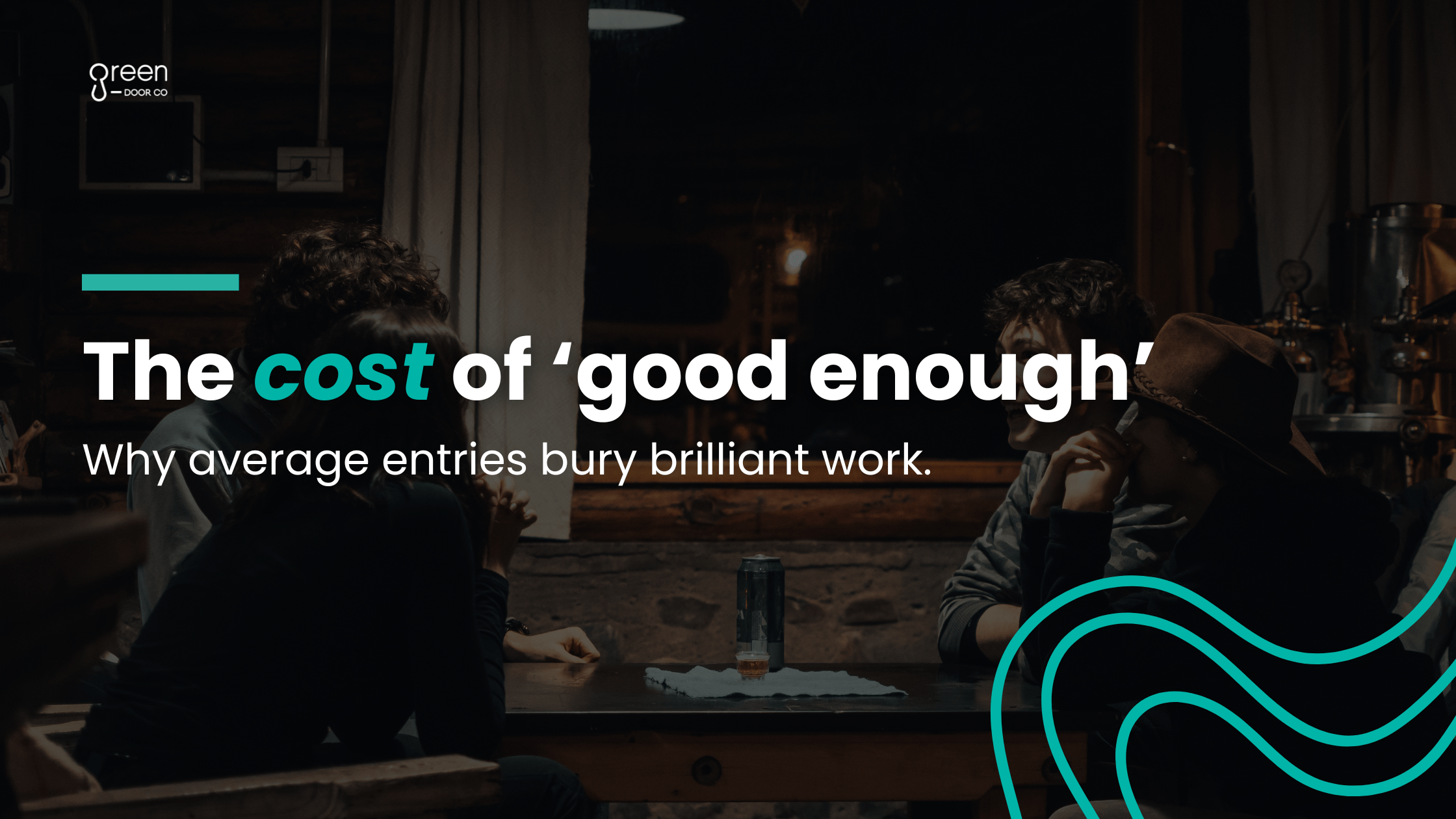Business leaders today face an overwhelming array of options to build visibility. Business awards, PR, case studies, podcasts, LinkedIn, speaking engagements — the list goes on. The temptation is to try a little bit of everything, but in practice this often leads to scattered efforts and underwhelming results.
The real question isn’t “which tool is best?” but rather “which tool is right for my business, at this point in time?” The key is prioritisation: knowing how to sequence these activities so they reinforce one another, rather than competing for your already-limited time and resources.
Below, we’ll explore three of the most effective credibility and visibility tools: awards, case studies, and PR, and show how to use them strategically.
Understanding the unique power of each tool
Case Studies: first-party proof
Case studies are detailed stories you tell yourself. They show a prospective customer what you’ve achieved and, crucially, how you solved a problem similar to theirs. Done well, they demonstrate outcomes, not just outputs.
Think of them as your “sales ammunition”: practical, evidence-based examples that directly answer the question every buyer has in mind, “Can you do this for me?”
PR: third-party amplification
Public Relations takes your story and puts it in front of a much larger audience. When a respected media outlet writes about your business, it frames you as a credible authority and gives you reach far beyond your own channels.
PR works best for visibility and thought leadership. It’s not as controlled as a case study, but that’s its strength, someone else is telling your story, which often carries more weight with readers.
Awards: third-party validation
Awards provide something even more powerful: independent, expert validation. Unlike PR, which is shaped by a journalist, or case studies, which are shaped by you, awards are judged against strict criteria by an external panel.
An award is a public statement that says: this organisation is one of the best in its field. That kind of endorsement builds trust quickly with clients, investors, and partners alike.
The strategic “when”: a framework for prioritisation
Rather than asking these tools to compete, the smartest approach is to see them as a sequence that builds upon itself.
Stage 1: Building a foundation
In the early stages of your business, case studies should be your focus. Capture stories of how you’ve helped clients, even if they’re small projects. These become your raw material for everything else that follows.
Stage 2: Gaining credibility
Once you’ve built a track record and have strong case studies in hand, it’s time to aim for awards. Those case studies are powerful evidence to strengthen your submission. An award win, in turn, provides that “seal of approval” which elevates you above competitors.
Stage 3: Scaling authority
With awards under your belt, PR becomes far easier. Journalists are much more likely to feature an “award-winning business” than one simply claiming to do good work. At this stage, your story carries more weight and is far more likely to cut through.
The flywheel effect
When done in the right order, these three tools don’t just add up, they compound. A great case study can help you win an award. The award then attracts PR attention. That media coverage, in turn, becomes a fresh piece of evidence you can repurpose in your next case study or award submission.
This cycle builds momentum. Each piece reinforces the others, creating a visibility flywheel that drives recognition, credibility, and ultimately growth.
Quality over quantity
It’s worth emphasising: this isn’t a race to collect as many awards, articles, or case studies as you can. A handful of high-quality pieces, chosen strategically, will do far more for your credibility than a scattergun approach.
One strong award, two or three compelling case studies, and a single well-placed media feature can provide a platform that supports business development for years.
The partner approach
For most leaders, managing this visibility strategy on top of running a business can feel overwhelming. Deciding which awards are worth the effort, shaping your case studies into compelling stories, or pitching journalists — it’s a lot.
That’s where the right partner comes in. At Green Door Co, we don’t just write award submissions; we help clients integrate awards into a broader visibility strategy. We identify the right opportunities, draw out your best stories, and ensure your efforts across awards, case studies, and PR work together to deliver real impact.
Final thoughts
So, which should you prioritise, awards, case studies, or PR? The answer is not “all of them, right now.” The smart move is to use each tool for what it’s best at, in the right order, and let them build on one another.
Start with proof (case studies), move to validation (awards), then scale with amplification (PR). Done well, this approach creates sustainable visibility and long-term credibility for your business.
If you’re ready to take a more strategic approach to visibility, starting with awards that fit your business stage, Green Door Co can help. Get in touch with our team today to explore how we can turn your hard work into recognition and results.
Frequently Asked Questions
To help busy leaders navigate visibility options, here are answers to some common questions about awards, case studies, and PR.
Q1. Should I prioritise awards or PR first?
It’s usually best to build a strong foundation with case studies first, then pursue awards. Awards provide third-party validation, which makes PR far more impactful. Without that validation, PR can feel like noise rather than news.
Q2. Are case studies more valuable for sales or marketing?
Case studies are powerful for both, but their main role is in sales. They answer the customer’s core question: “How will you solve my problem?” Marketing teams can also repurpose them for content, award submissions, and pitches.
Q3. Do I need to win an award for it to be useful?
Not at all. The process of entering awards forces reflection on your achievements, helping you uncover strengths and gaps. Even shortlisting builds credibility, and if you win, that’s a bonus!
Q4. How do awards, PR and case studies work together?
Think of them as a cycle: case studies prove your value, awards validate it, and PR amplifies it. Together, they create a flywheel effect that keeps building visibility and trust over time.








